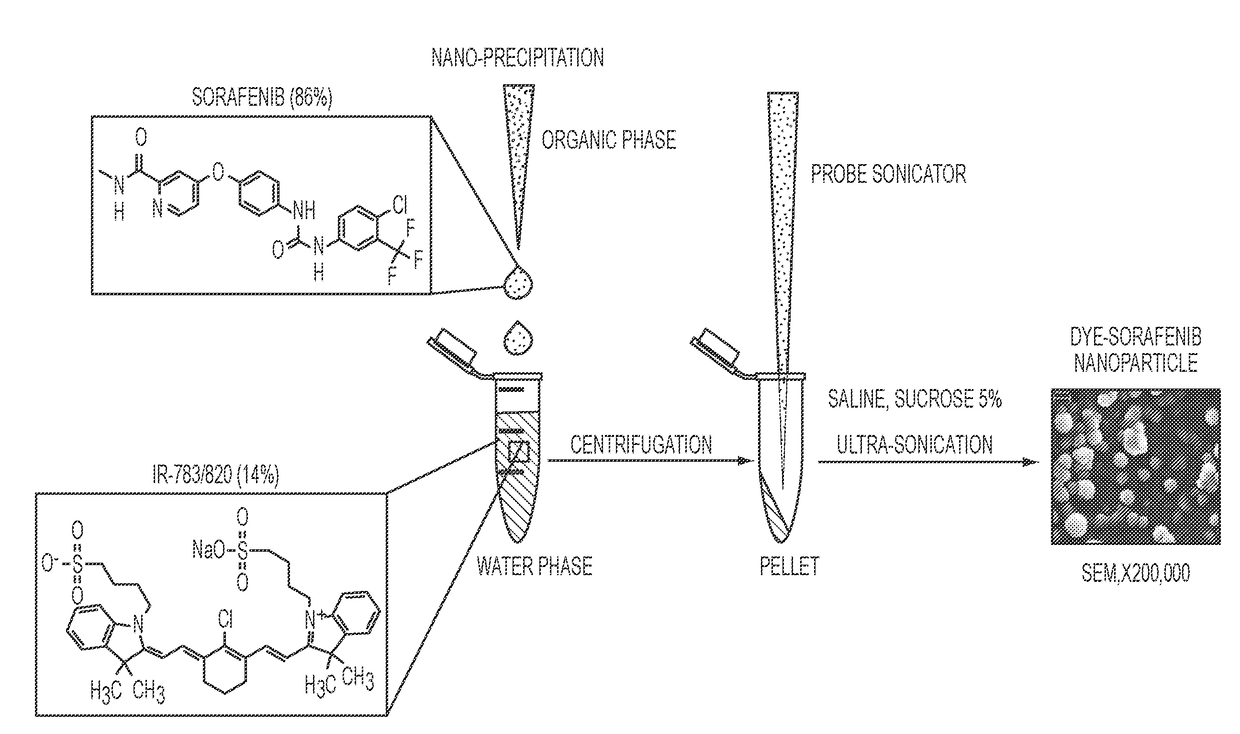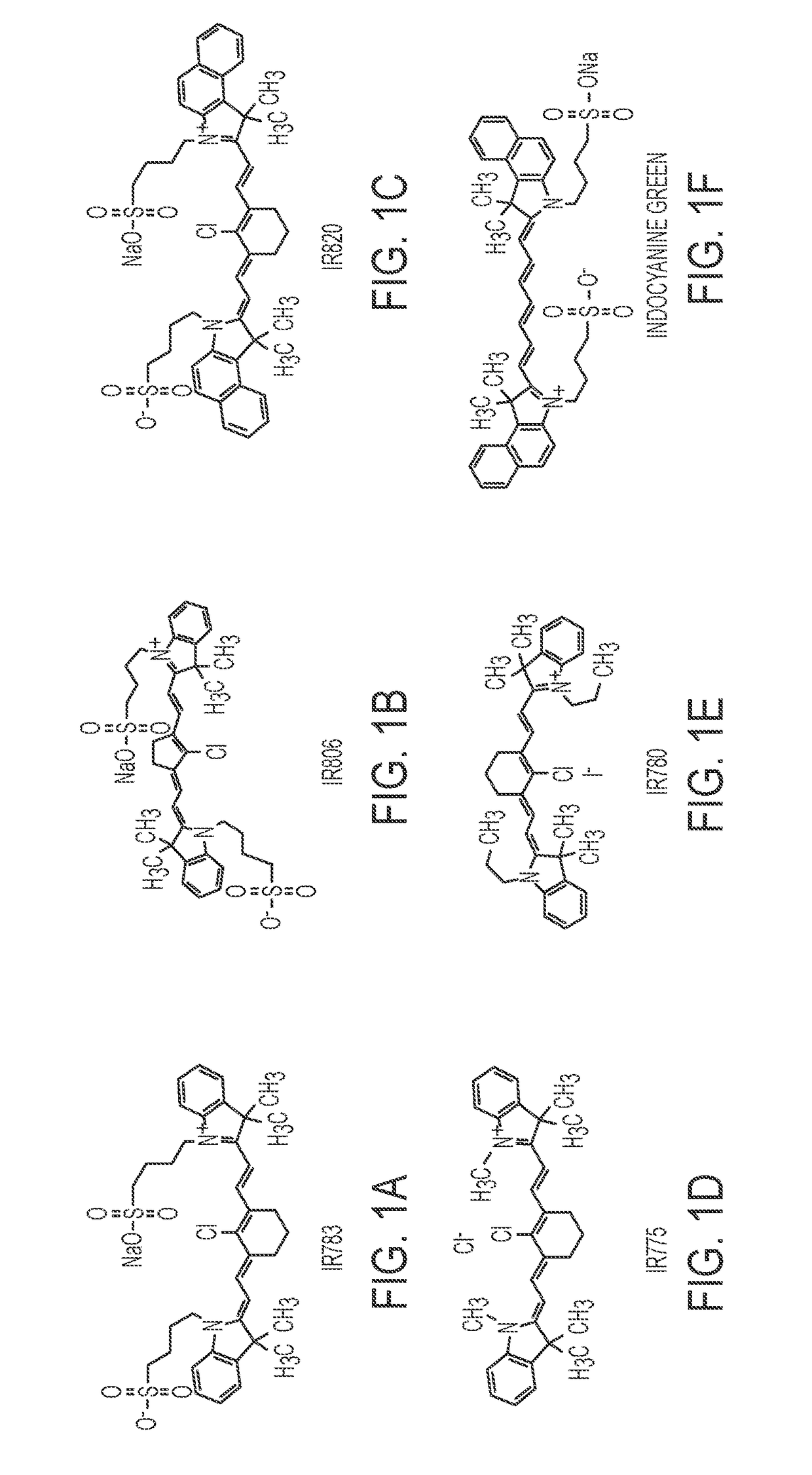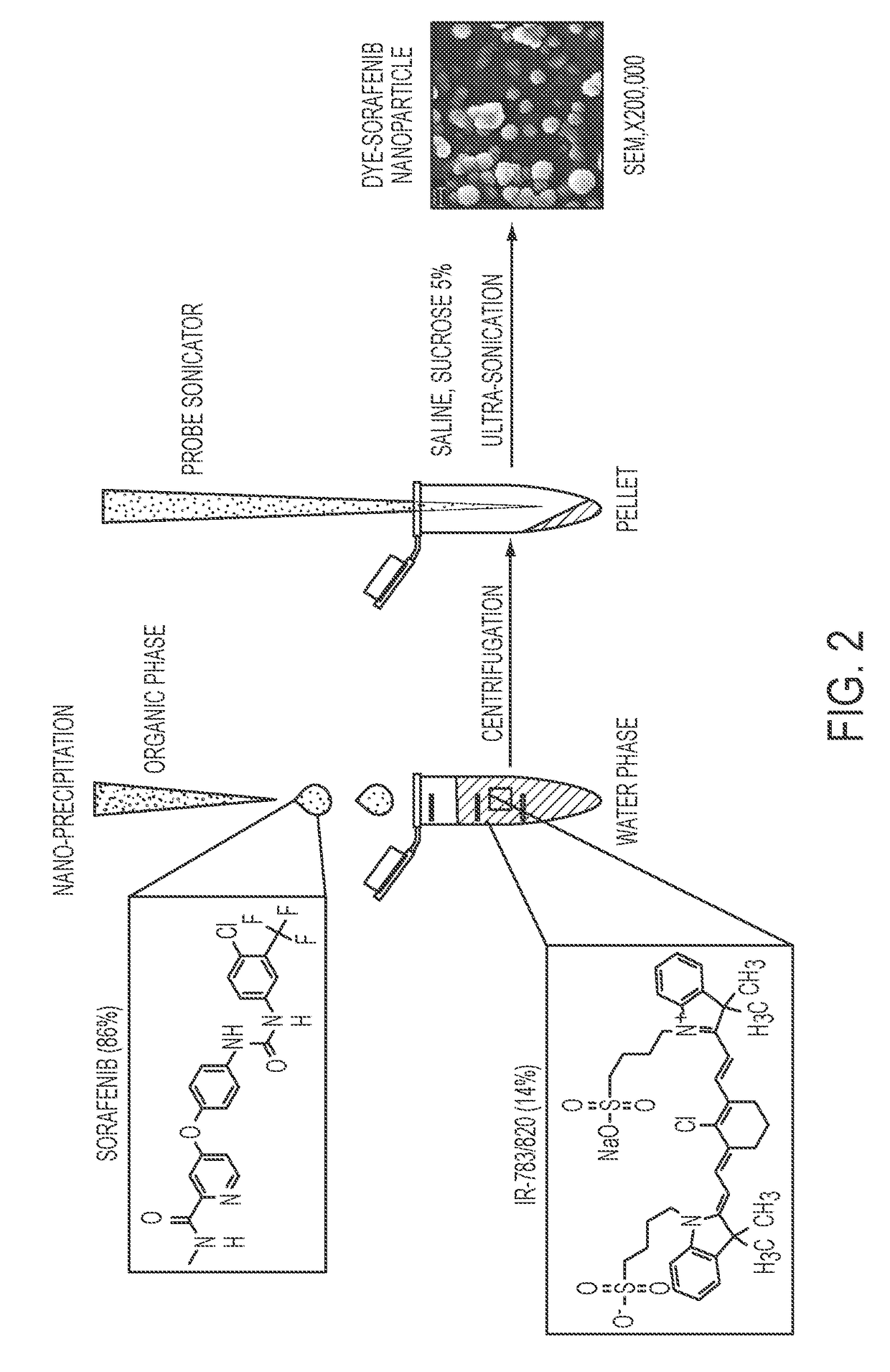Dye-stabilized nanoparticles and methods of their manufacture and therapeutic use
a nanoparticle and dye-stabilized technology, applied in the field of nanoparticles, can solve the problems of high drug loading, high drug loading, and high toxicity of systemically delivered chemotherapy, and achieve the effects of high drug loading, high drug soluble in water, and negative surface charg
- Summary
- Abstract
- Description
- Claims
- Application Information
AI Technical Summary
Benefits of technology
Problems solved by technology
Method used
Image
Examples
experimental examples
Synthesis Methods of Selected Nanoparticles
[0170]In this example, the nanoparticles were synthesized by nano-precipitation. In this example concentrated hydrophobic drug solution in organic solvent was slowly introduced dropwise to a water phase which contains a water soluble sulfated organic dye. This method is often used to produce nanoparticles composed polymers or lipids, but in this case we used small molecule cyanine dyes. The size range of the resulting particles was between 20 and 300 nm with a polydispersity index of about 0.05-0.3 and a monodispersity of about 0.05-0.15. The particles were administered intravenously in a saline solution or PBS buffer, but many routes should be possible, including interperitoneally, subcutaneously, or intramuscularly. The injection media may also contain 5% sucrose for stability under lyophilization.
Preparation of Indocyanine Nanoparticles
[0171]0.1 ml of each drug, dissolved in DMSO (10 mg / ml), was added drop-wise (20 per 15 sec) to a 0.6 m...
PUM
| Property | Measurement | Unit |
|---|---|---|
| intensity-weighted average diameter | aaaaa | aaaaa |
| average diameter | aaaaa | aaaaa |
| concentration | aaaaa | aaaaa |
Abstract
Description
Claims
Application Information
 Login to View More
Login to View More - R&D
- Intellectual Property
- Life Sciences
- Materials
- Tech Scout
- Unparalleled Data Quality
- Higher Quality Content
- 60% Fewer Hallucinations
Browse by: Latest US Patents, China's latest patents, Technical Efficacy Thesaurus, Application Domain, Technology Topic, Popular Technical Reports.
© 2025 PatSnap. All rights reserved.Legal|Privacy policy|Modern Slavery Act Transparency Statement|Sitemap|About US| Contact US: help@patsnap.com



